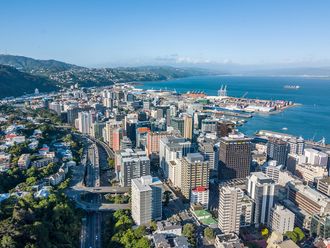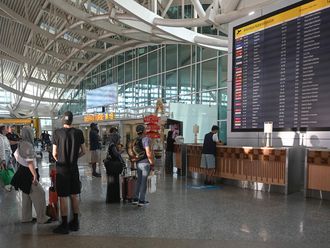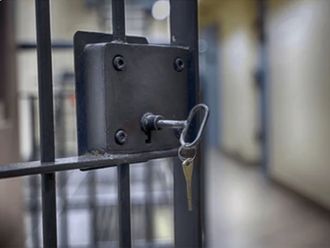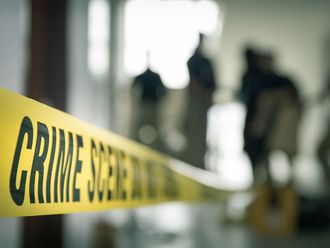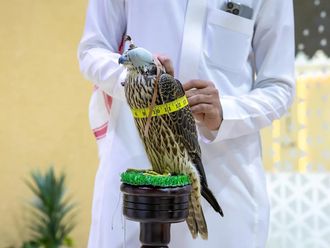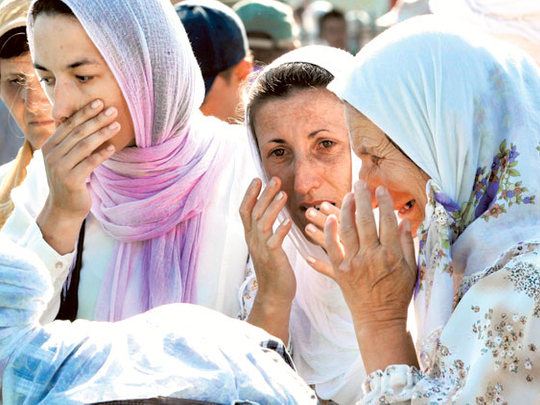
Srebrenica: Thousands of people gathered in Srebrenica Wednesday where 520 newly identified victims of Europe’s worst atrocity since Second World War will be buried on its 17th anniversary.
“It is the pain, an endless pain, and when July 11 arrives, every year, this pain becomes unbearable,” Sevdija Halilovic said crying.
The woman in her 50s arrived at the special memorial centre in Potocari, just outside Srebrenica, where her father’s remains will be laid to rest in the mass funeral later in the day.
“My father’s remains were exhumed from two mass graves. My two brothers were also killed in the massacre but have not been found yet,” she said.
This anniversary will be the first time Bosnia mourns the massacre with its two alleged masterminds, Bosnian Serb commander Ratko Mladic and political leader Radovan Karadzic, on trial before the UN war crimes court.
“A measure of justice is finally being served for the victims in courts in The Hague and Bosnia-Hercegovina, as the perpetrators of this atrocity, including Ratko Mladic and Radovan Karadzic, are now being called to account for their actions,” US President Barack Obama said in statement.
He slammed any attempts to “deny the indisputable fact that it was genocide” in a clear swipe at Serbia’s new President Tomislav Nikolic who said last month that the killings constituted “grave war crimes” but not genocide.
Many survivors and relatives of the close to 8,000 Muslim men and boys killed in Srebrenica after Bosnian Serbs forces overran the eastern Bosnian town on July 11, 1995, said the trials were too little, too late.
“It hurts me to watch broadcasts of the trials... it does not comfort me. [Karadzic and Mladic] plead not guilty, they say this was not genocide,” Muniba Cakar told AFP.
“It should be enough to come here and see the thousands of graves. If that is not proof, we should give up,” the 63-year-old said bitterly, gesturing at the open graves and the simple white headstones that fill the vast cemetery.
Later on Wednesday her husband will be buried here alongside the 5,137 victims already here.
The trial of Mladic, who led the attack on Srebrenica, resumed in The Hague this week with the first witnesses, a little over a year since his arrest in Serbia. Karadzic is due to start presenting his defence case in October before the International Criminal Tribunal for the former Yugoslavia (ICTY).
Both men face genocide charges for masterminding the massacre and have pleaded not guilty.
Seventeen years after the massacre, which has been deemed a genocide by two international courts, the remains of 6,800 Srebrenica victims have been identified, but the search goes on.
The Bosnian Serbs went to great lengths to hide the scale of the killings and returned months later to dig up bodies from mass graves and dump them in at least 28 so-called secondary grave sites.
The excavations continue to this day.
Not all identified remains have been buried as some families are waiting to lay to rest their relatives together.
Others, whose loved ones were identified on the basis of just a few bones, hope that more remains will be recovered for burial.
The people who can bury their dead are the envy of those still waiting for a phone call from Bosnia’s Institute for Missing Persons that confirms that their husbands, sons, fathers or brothers have been found.
“If only I could find a single bone from my son to bury, to finally have a place for his grave, to put an end to this nightmare,” Suhra Ahmetovic, 60, told AFP.
“I live from day to day, waiting for that phone call,” she said, clutching a blue t-shirt that belonged to Semir who was 17 when she last saw him in Srebrenica.


